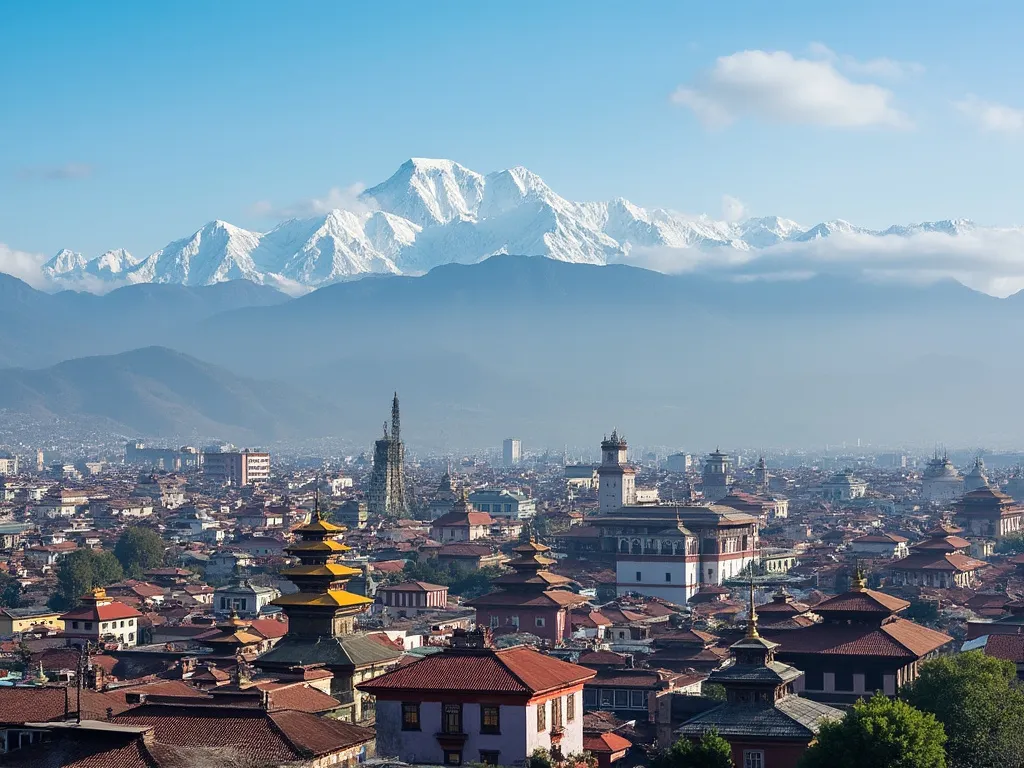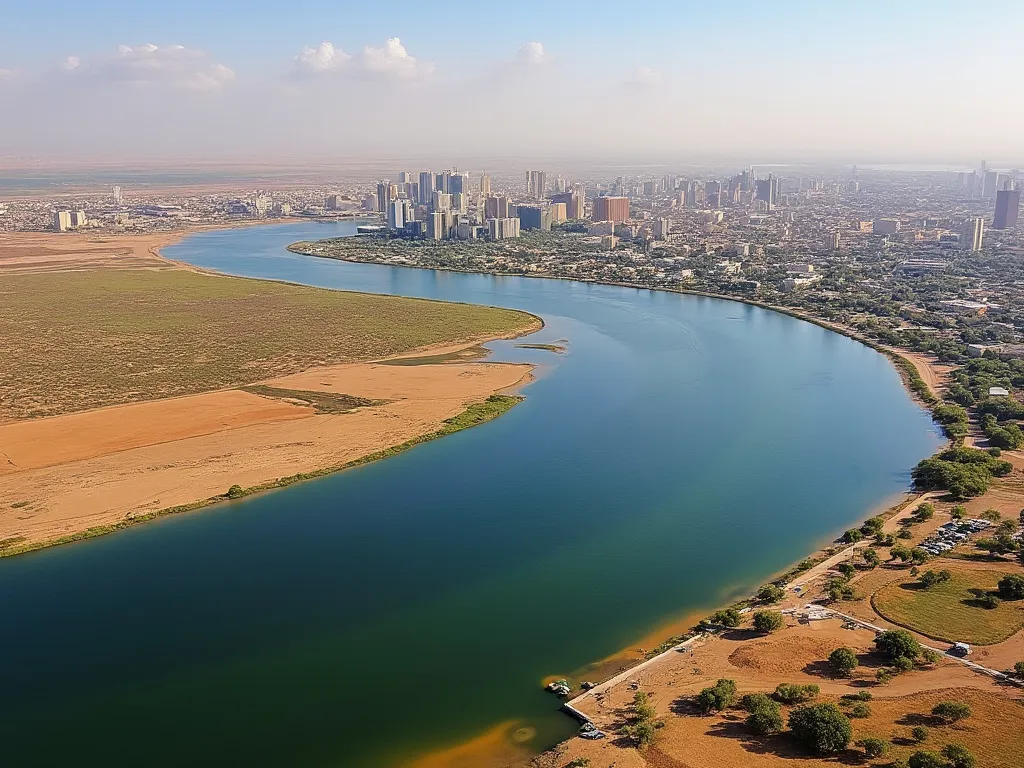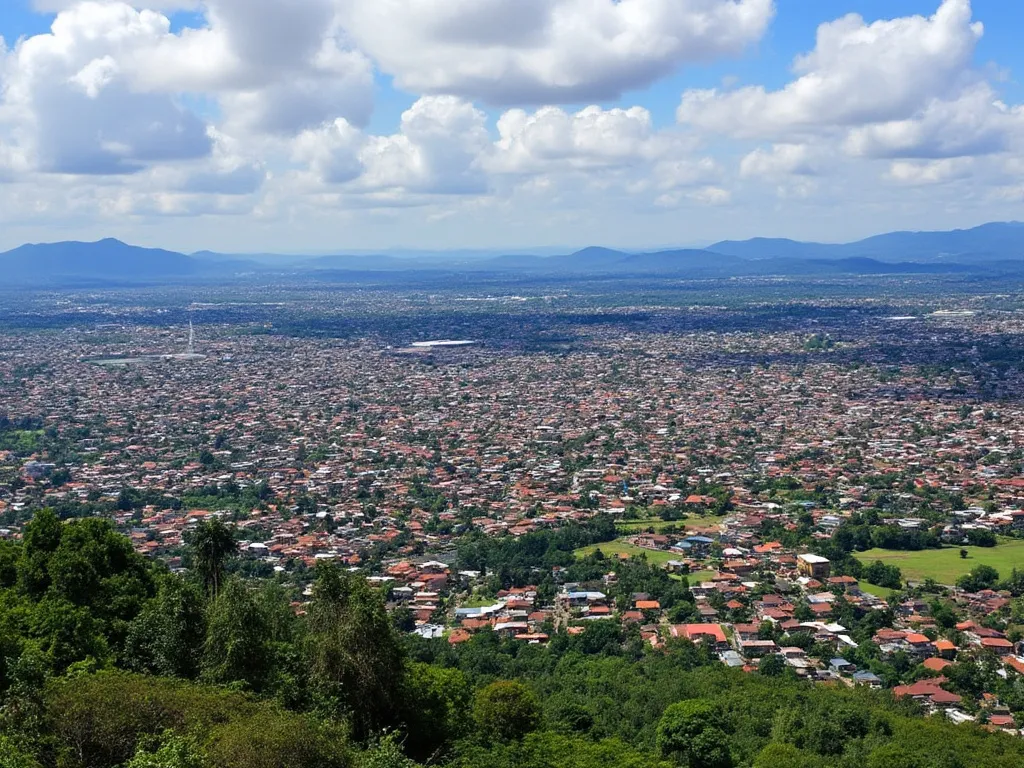
Kathmandu, the capital city of Nepal, is a bustling metropolis situated in the bowl-shaped Kathmandu Valley. The city is known for its rich cultural heritage, stunning architecture, and breathtaking natural beauty. Kathmandu is a city of contrasts, where ancient temples and shrines stand alongside modern buildings and infrastructure.
Kathmandu Information
| Country | 🇳🇵 Nepal |
| Population | 845,767 |
| City Coordinates | 27.7172° N, 85.3240° E |
| City Area | 49.45 km² |
| Climate | Subtropical highland climate |
| Language | Nepali |
| Currency | Nepalese rupee |
| Time zone | UTC+5:45 |
| Proximity to other major cities | Lucknow, India (410 km), Patna, India (440 km), Kolkata, India (640 km) |
Historical Background of Kathmandu
Kathmandu has a long and storied history dating back to the 2nd century AD. The city was once a major stop on the ancient Silk Road, a network of trade routes that connected India to China. Over the centuries, Kathmandu has been ruled by various dynasties, including the Licchavi, Thakuri, and Malla kingdoms. In 1768, the city was unified under the rule of the Shah dynasty, which still reigns today.
Geographical Location of Kathmandu
Kathmandu is situated in the heart of the Kathmandu Valley, a fertile and densely populated region surrounded by the Himalayan Mountains. The city is nestled at an altitude of 1,400 meters (4,600 feet) above sea level, making it one of the highest capital cities in the world. The climate in Kathmandu is mild, with four distinct seasons: winter, spring, summer, and autumn.
Cultural Significance of Kathmandu
Kathmandu is a city steeped in culture and tradition. The city is home to numerous temples, shrines, and monuments, including the famous Pashupatinath Temple, a UNESCO World Heritage Site. The city's cultural scene is also reflected in its vibrant festivals and celebrations, such as the Dashain and Tihar festivals.
Economic Importance of Kathmandu
Kathmandu is the economic hub of Nepal, accounting for a significant portion of the country's GDP. The city is a major center for trade, commerce, and industry, with a thriving manufacturing sector. Tourism is also a significant contributor to the city's economy, with millions of visitors flocking to the city each year to experience its rich culture and natural beauty.
Interesting Facts About Kathmandu
- Kathmandu is home to the oldest known Hindu temple in the world, the Changu Narayan Temple.
- The city's name is derived from the Sanskrit word "Kasthamandap," meaning "wooden temple."
- Kathmandu is often referred to as the "City of Temples" due to its numerous temples and shrines.
- The city is home to the largest Buddha statue in the world, the Boudhanath Stupa.
Tourist Attractions in Kathmandu
- Pashupatinath Temple
- Boudhanath Stupa
- Changu Narayan Temple
- Kathmandu Durbar Square
- National Museum of Nepal
Conclusion on Kathmandu
Kathmandu is a city that seamlessly blends tradition and modernity, offering a unique and unforgettable experience for visitors. From its stunning architecture to its vibrant cultural scene, Kathmandu is a city that will leave you in awe. Whether you're interested in history, culture, or adventure, Kathmandu has something to offer for everyone.
 Khartoum
Khartoum
 Kigali
Kigali
 Kabul
Kabul
 Kampala
Kampala